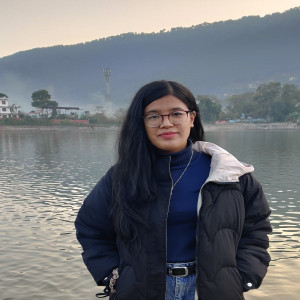Discover Kathmandu Durbar Square
Kathmandu Durbar Square, also known as Hanuman Dhoka Durbar Square, is a vibrant and historically significant site located in the heart of the capital city of Nepal. This UNESCO World Heritage Site is a spectacular showcase of Nepalese architecture, culture, and history, dating back to the Licchavi period around the 3rd century. Here are some key aspects and attractions of Kathmandu Durbar Square that make it a must-visit destination:
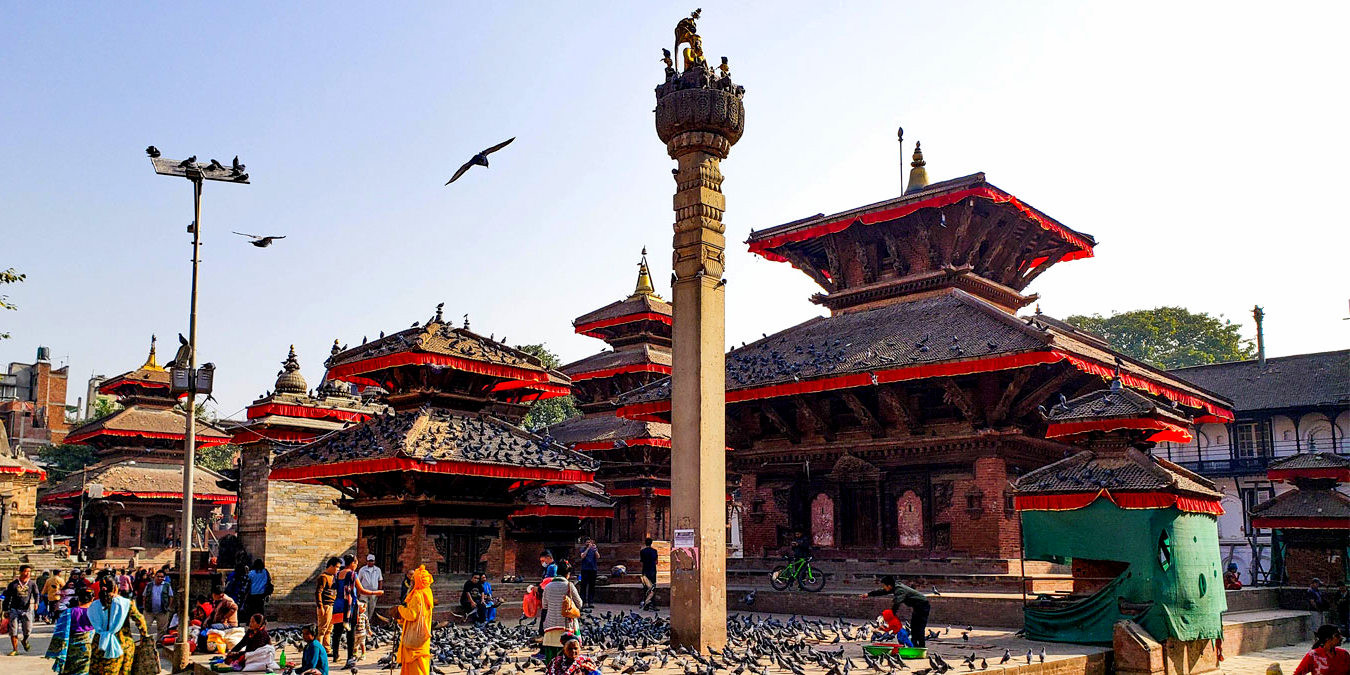
Historical Significance: Kathmandu Durbar Square served as the royal Nepalese residence until the 19th century and was the seat of ancient Malla Kings of Kathmandu. The square is surrounded by spectacular architecture that exemplifies the skills and craftsmanship of Newar artisans over several centuries.
Architectural Marvels
The architecture in Durbar Square is a mix of wood and stone art characterized by intricate carvings and stunningly detailed struts, windows, and doors. Notable structures within the square include:
-
Kumari Ghar: The residence of the Living Goddess, Kumari, is a beautifully decorated building with intricately carved windows and doors. Visitors might glimpse the Kumari herself at one of the windows on select occasions.
-
Taleju Temple: Built-in 1564 by King Mahendra Malla, this temple is one of the oldest and tallest in the entire square, reflecting the typical tiered Newari architectural style.
-
Hanuman Dhoka Palace: This sprawling palace complex covers five acres and houses several courtyards, museums, and temples. It is named after the statue of Hanuman, the monkey deity, positioned at the palace entrance.
Cultural Experience: The square is not just about ancient palaces and temples; it's a living, breathing center of Nepalese culture. It hosts various festivals, cultural performances, and rituals throughout the year, a fantastic way for visitors to experience local traditions and festivities.
Museums: The square features several museums offering insights into Nepal's rich history and culture. The Hanuman Dhoka Palace Museum, located within the palace complex, displays artifacts related to the royal families of Nepal, including thrones, ceremonial items, and paintings.
Visiting Tips
-
Best Time to Visit: Early morning or late afternoon are the best times to visit to avoid the crowds and to observe local life in and around the square.
-
Entry Fees: There is a small entry fee for foreign tourists, which is used for the maintenance and restoration of the sites within the square.
-
Guided Tours: Consider hiring a local guide to gain deeper insights into the history and significance of the various buildings and the stories behind them.
Exploring Kathmandu Durbar Square offers a fascinating glimpse into the art, culture, and history of Kathmandu and is an essential experience for any visitor to Nepal.
Visit Swayambhunath Stupa (Monkey Temple)
Swayambhunath Stupa, affectionately known as the Monkey Temple due to the holy monkeys that reside in parts of the temple, is one of the most ancient and revered holy shrines in Kathmandu, Nepal. Perched atop a hill on the western edge of Kathmandu, it offers not only spiritual solace but also panoramic views of the city. Here's what makes Swayambhunath a must-visit for anyone traveling to Kathmandu:
.jpg)
-
Spiritual Significance: Swayambhunath is a prime site for Buddhists and Hindus alike, illustrating Nepal's unique blend of religious harmony. The stupa is said to have evolved spontaneously when the valley was created out of a primordial lake more than 2,000 years ago. It is one of the oldest existing Buddhist monuments in the world.
-
Architectural Highlights: The stupa itself is a beautiful white dome topped with a golden spire, painted with the wise eyes of the Buddha looking in all four directions. The spire is made of gold-plated copper and is surrounded by colorful prayer flags that flutter in the wind, carrying mantras and prayers heavenward. Around the base of the main stupa, there are numerous shrines and other smaller stupas, each rich in symbolism and artistic detail.
-
The Monkeys: The temple gets its nickname from the hundreds of monkeys that scamper around the complex. They are considered sacred because Manjushri, the bodhisattva of wisdom and learning, was raising the hill which the stupa stands on when lice from his hair transformed into these monkeys.
-
Cultural and Historical Context: Swayambhunath is a key part of Kathmandu's cultural and religious life, evident in the daily rituals performed at the temple and during special festivals like Losar (Tibetan New Year) and Buddha Jayanti (the birthday of the Buddha).
-
Panoramic Views: From the hilltop, visitors can enjoy sweeping views of Kathmandu and the surrounding valley, making it a popular spot not just for pilgrims but also for tourists seeking a picturesque snapshot of the city.
-
Art and Iconography: The entire complex is dotted with a variety of statues, shrines, and Tibetan prayer wheels, intricately carved and beautifully maintained. The art and iconography seen here provide deep insights into Nepalese Buddhist culture.
Visiting Tips
-
Climbing the Steps: Be prepared for a bit of a climb—365 steps to be exact! The journey to the top is part of the spiritual and physical experience.
-
Respect the Monkeys: While the monkeys are accustomed to humans, it's best to keep a safe distance and secure your belongings.
-
Guided Tour: Hiring a local guide can enrich your visit, providing background on the stupa's history and details on the symbolism found throughout the complex.
-
Sunrise and Sunset: Visiting during these times not only beats the crowds but also offers spectacular views and lighting for photography.
Swayambhunath Stupa is not just a tourist destination; it's a vibrant, living museum of religious devotion, art, and culture that offers a serene escape from the bustling city below. A visit here promises to be a memorable part of your Kathmandu experience.
Explore Boudhanath Stupa
Boudhanath Stupa is one of the most imposing landmarks in Kathmandu, renowned for its massive mandala design and as a pivotal center for Tibetan Buddhism in Nepal. This magnificent stupa stands as one of the largest spherical stupas in Nepal and the world, attracting scores of pilgrims and visitors daily. Here’s what makes Boudhanath Stupa a captivating site for anyone visiting Kathmandu:.
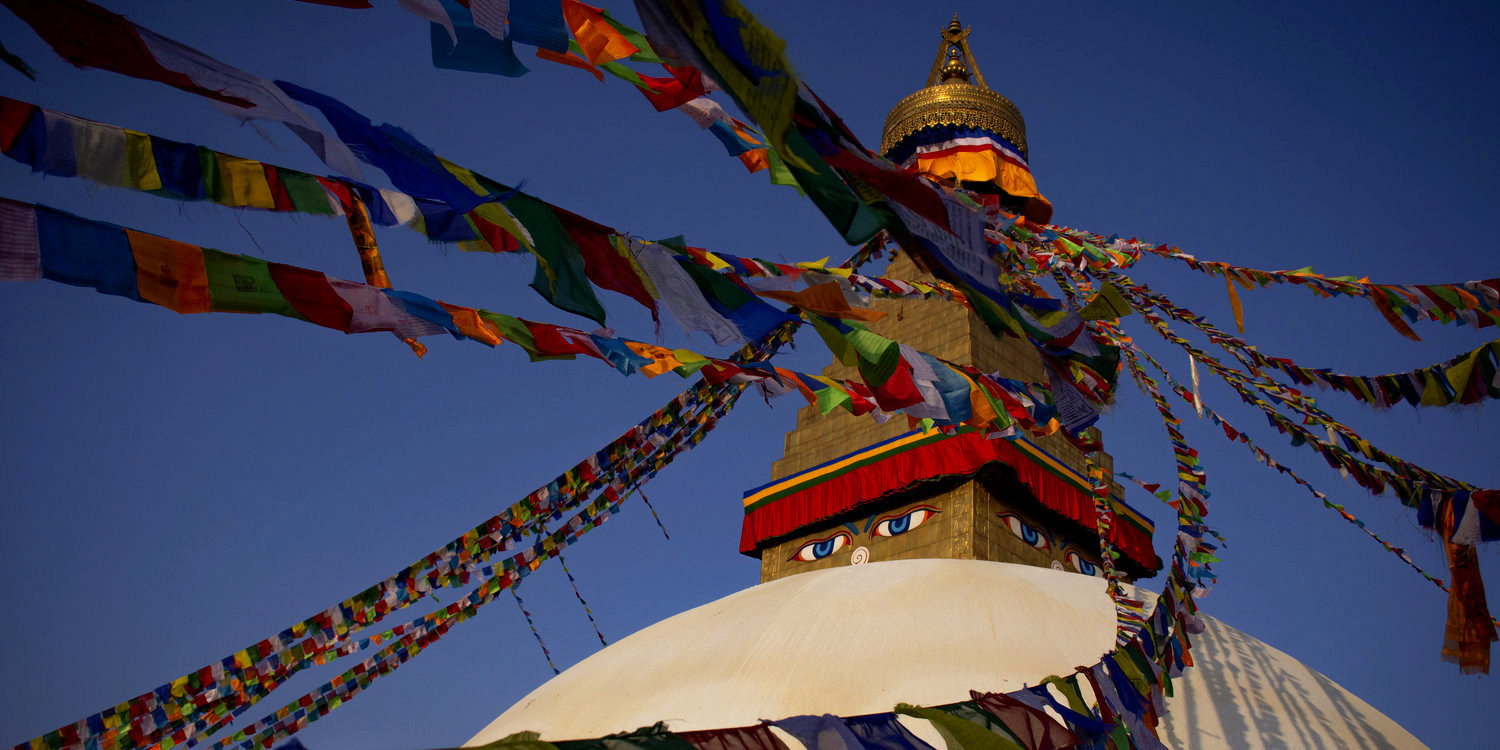
-
Spiritual Heart of Tibetan Buddhism: Boudhanath is a vital place of pilgrimage and meditation for Tibetan Buddhists and local Nepalis, as well as a popular tourist site. It is said to contain the remains of Kassapa Buddha, an ancient Buddha, which makes it an exceptionally sacred site. The stupa's massive size and profound symbolism are visible expressions of Buddhist doctrines.
-
Architectural Splendor: The stupa's architecture is stunning, with a giant dome that symbolizes the emptiness from which everything emanates. Above the dome, the square tower is topped with a pyramid of thirteen steps, representing the stages that a human being must pass through to achieve nirvana. The iconic eyes of Buddha are painted on all four sides of the tower, symbolizing the all-seeing ability of the Buddha. The nose-like figure is actually the Nepali character for the number one, symbolizing unity and the one path towards enlightenment—through the practice of Buddhism.
-
Cultural Hub: Surrounding the Boudhanath Stupa is a vibrant hub of narrow streets and alleys, filled with monasteries, meditation centers, and Tibetan shops selling religious art, thangkas, and handicrafts. The area also features restaurants and cafes where you can enjoy traditional Tibetan and Nepalese cuisine, providing a full cultural experience.
-
Rituals and Ceremonies: Visitors to Boudhanath can witness daily rituals performed by Buddhist monks, including the morning and evening kora (ritual circumnavigation of the stupa), prayer flag offerings, and the spinning of prayer wheels. The site becomes particularly lively during Buddhist festivals such as Losar (Tibetan New Year) and Buddha Jayanti (Buddha's birthday).
-
Panoramic Views and Peaceful Atmosphere: The atmosphere around Boudhanath is charged with devotion and peace. The rooftop cafes and restaurants around the stupa offer a great vantage point for taking in the view and soaking up the serene vibes. The sight of devout Buddhists performing their rituals adds to the spiritual and mystical ambiance of the place.
Visiting Tips
-
Best Time to Visit: Early mornings or late afternoons are less crowded and offer a more peaceful experience.
-
Respect the Customs: When walking around the stupa, remember to do so in a clockwise direction, which is customary in Buddhist practice.
-
Photography: While photography is generally allowed, always be respectful and considerate, especially when taking photos of monks and pilgrims.
-
Explore the Surroundings: Take time to visit some of the Tibetan monasteries around the stupa, where you can sometimes observe Buddhist teachings and prayer sessions.
Exploring Boudhanath Stupa not only offers a glimpse into the spiritual practices and rituals of Tibetan Buddhism but also provides a peaceful retreat from the hustle and bustle of Kathmandu. Whether you’re deeply interested in Buddhism or simply looking to experience a new cultural setting, Boudhanath is a place that resonates with harmony and spiritual wellbeing.
Stroll Through Thamel
Thamel, Kathmandu’s bustling tourist hub, is a vibrant and lively district known for its narrow alleys lined with shops, restaurants, bars, and boutique hotels. It serves as the main stay for travelers in the city, offering a blend of traditional culture and modern conveniences. Here’s why a stroll through Thamel should be on every visitor's itinerary:
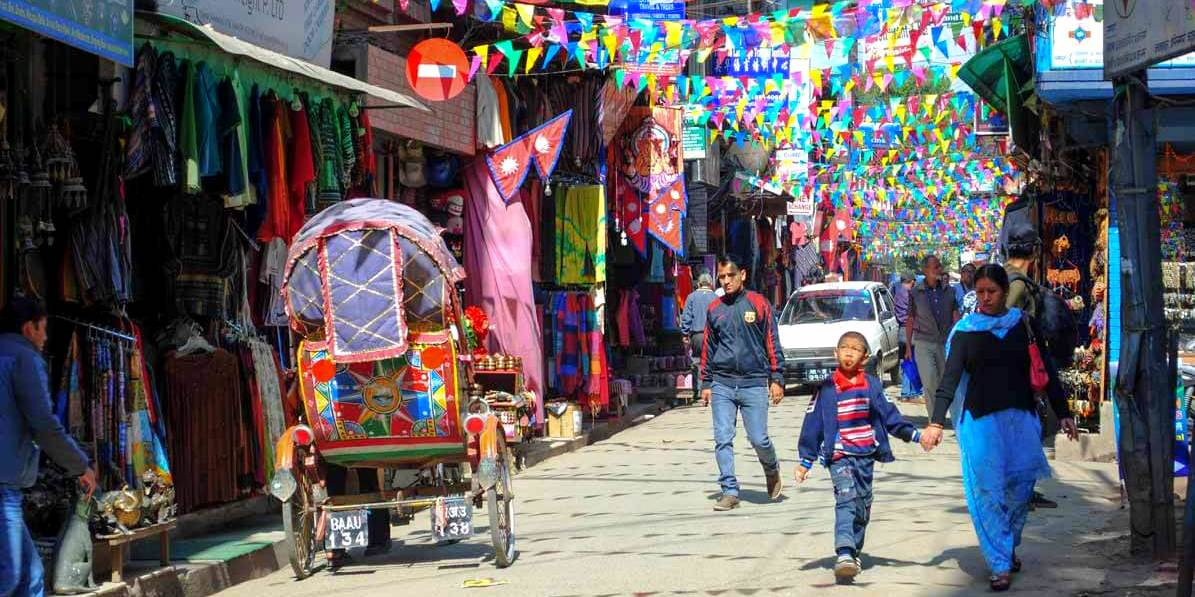
-
Shopping Haven: Thamel is a shopper's paradise, offering everything from handmade Nepalese handicrafts to trekking gear and souvenirs. As you wander through its streets, you’ll find traditional Thanka paintings, intricately designed jewelry, Pashmina shawls, and an array of clothing that reflects both Nepali and western styles. The bustling bazaars and street vendors make shopping here an exciting and dynamic experience.
-
Culinary Delights: Thamel is also a culinary hotspot where you can taste a wide range of Nepali and international cuisines. From traditional dishes like momos (dumplings) and dal bhat (rice and lentils) to international flavors such as Italian, Mexican, and Korean, there’s something to satisfy every palate. Many restaurants also offer live music and cultural performances, providing a great atmosphere to dine and relax.
-
Nightlife and Entertainment: As the sun sets, Thamel transforms into a lively nightlife scene with an array of bars, pubs, and clubs that offer live music ranging from traditional Nepali folk music to contemporary western hits. Whether you're looking to unwind after a day of sightseeing or dance the night away, Thamel has plenty of options to choose from.
-
Cultural Mix: Thamel is not just about shopping and nightlife; it’s a melting pot of cultures from around the world. This diversity is reflected in its people, cuisine, and the myriad of travel and trekking agencies that cater to every adventurer's needs. Here, you can meet fellow travelers, share stories, and gather tips for further travels in Nepal.
-
Accessibility: One of the great things about Thamel is its central location in Kathmandu. It’s easily accessible from major landmarks and is a common starting point for many tours and treks. The area is mostly pedestrianized, which makes it ideal for leisurely strolls without the worry of traffic.
-
Staying Connected: For travelers who need to stay connected, Thamel offers numerous cafes and lounges with Wi-Fi, making it easy to plan your next trip stages or catch up with friends and family back home.
Visiting Tips
-
Currency Exchange: Thamel has many money exchange outlets offering competitive rates; it's a convenient place to change currency.
-
Negotiate Prices: While shopping, don't hesitate to bargain, as it is quite common and expected in local shops and stalls.
-
Safety First: Keep an eye on your belongings, as the crowded streets can attract pickpockets.
A stroll through Thamel provides not only a taste of Kathmandu’s urban culture but also a glimpse into the lively, spirited character of its people. Whether you’re shopping for unique local crafts, enjoying a meal, or just soaking in the vibrant atmosphere, Thamel offers a dynamic and immersive experience in the heart of Kathmandu.
Experience Pashupatinath Temple
Pashupatinath Temple, situated on the banks of the holy Bagmati River in Kathmandu, is one of the most significant Hindu temples in Nepal and a pivotal shrine for the followers of Lord Shiva. This sacred site, a UNESCO World Heritage Site, draws devotees and tourists from around the globe, offering a profound glimpse into the spiritual and cultural fabric of Nepalese society. Here’s what makes a visit to Pashupatinath Temple a deeply enriching experience:
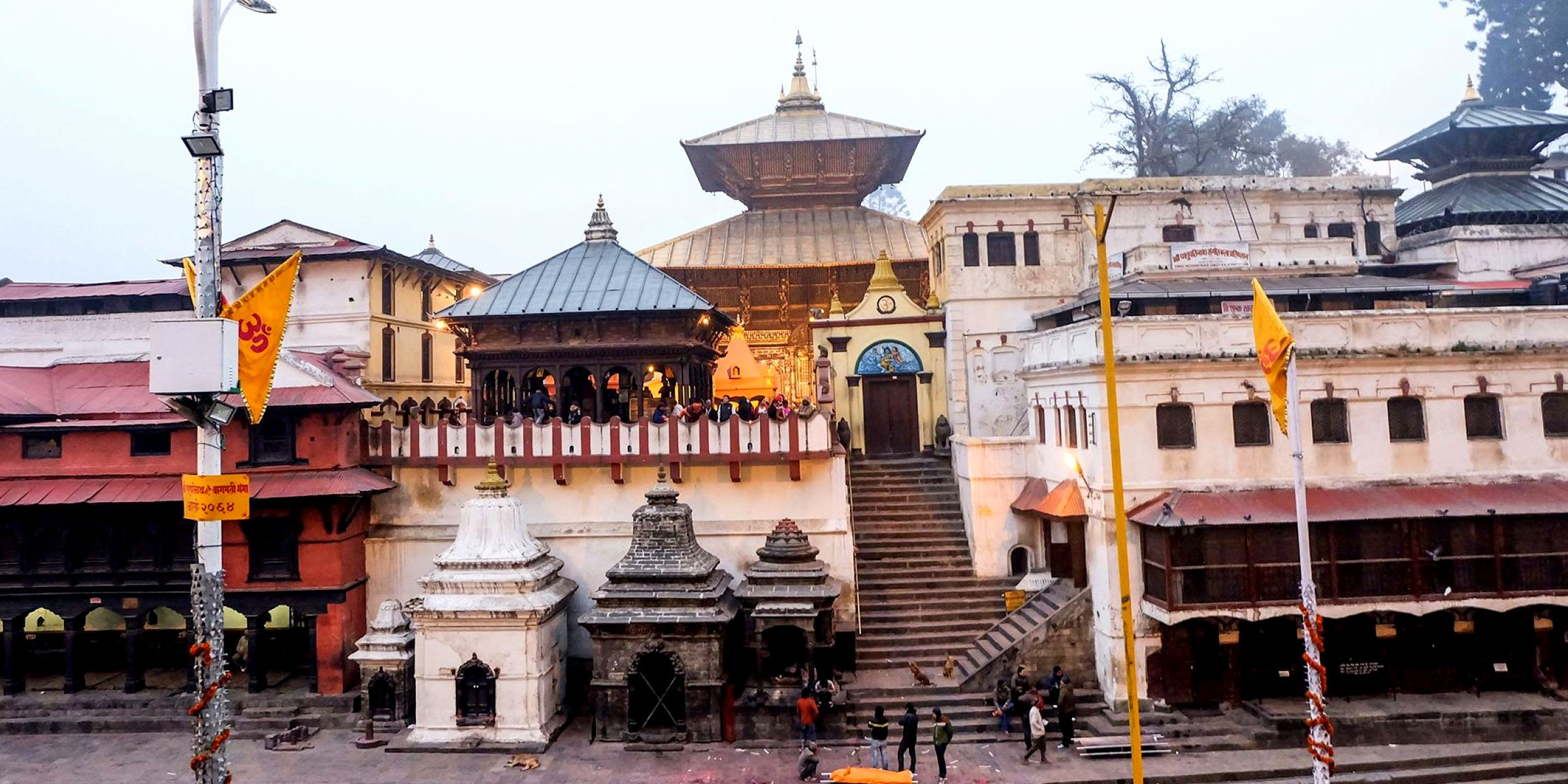
-
Spiritual Significance: Pashupatinath is considered the guardian deity of Nepal. The temple complex is a collection of temples, ashrams, images, and inscriptions raised over the centuries along the banks of the Bagmati River. It is believed to be the place where Shiva, one of the principal Hindu deities, manifested as the lord of animals, and it holds a special place in the hearts of his devotees.
-
Architectural Grandeur: The main temple of Pashupatinath is a stunning example of Hindu architecture. It is built in the classic Nepalese pagoda style, characterized by its cubic constructions, intricately carved wooden rafters (which are seen nowhere else in the world), and the gilded two-tiered roofs. The silver-plated doors and vibrant wooden sculptures of deities embedded in the walls further enhance its spiritual ambiance.
-
Cultural and Ritual Observances: Pashupatinath is a living cultural heritage site with daily rituals that are fascinating to observe. Every morning, priests perform rituals to worship Lord Shiva, and throughout the day, you can see devotees taking ritual dips in the holy Bagmati River. The evenings are marked by the enchanting Aarti ceremony at dusk accompanied by traditional music and hymns, which is a must-see for visitors.
-
Open-Air Cremations: One of the unique aspects of visiting Pashupatinath is witnessing the open-air cremations along the banks of the Bagmati River. These cremations are a profound experience, providing insight into the Hindu beliefs regarding life, death, and rebirth. Observing these rites is a reminder of the ephemeral nature of life and can be a deeply moving experience.
-
Sadhus and Ascetics: The temple complex is also home to many Sadhus, or Hindu ascetics, who have renounced worldly life in pursuit of spiritual liberation. These colorful characters, often dressed in saffron robes and smeared with ash, are a common sight around the temple and are usually open to interacting with visitors.
-
Wildlife and Scenery: The extensive forests around Pashupatinath are protected as the Pashupati Temple Tiger Reserve, making the area not only a place of religious importance but also a haven for nature enthusiasts. The serene environment, rich with greenery and the tranquil flow of the Bagmati River, provides a peaceful retreat from the hustle and bustle of Kathmandu.
Visiting Tips
-
Respect the Customs: Non-Hindus are not allowed inside the main temple but can observe the exterior architecture and the surrounding activities.
-
Photography: Be respectful when taking photos, especially during cremation ceremonies. Always ask for permission before photographing individuals.
-
Dress Appropriately: As a sign of respect, visitors should wear modest clothing that covers shoulders and knees.
Visiting Pashupatinath offers not only a look into the spiritual life of Nepal but also provides a deeper understanding of the cultural practices surrounding life, death, and worship in Hinduism. Whether you are a spiritual seeker, a lover of history, or simply curious about different cultures, Pashupatinath Temple promises a profound and memorable experience.
Admire the Garden of Dreams
Located in the heart of bustling Kathmandu, the Garden of Dreams offers a serene escape into a beautifully restored Edwardian garden. This historical oasis, situated just across from the former Royal Palace at the entrance to the Thamel area, provides a stark contrast to the urban chaos with its neoclassical architecture, lush landscaping, and tranquil ambiance. Here’s what makes the Garden of Dreams a must-visit for anyone traveling to Kathmandu:
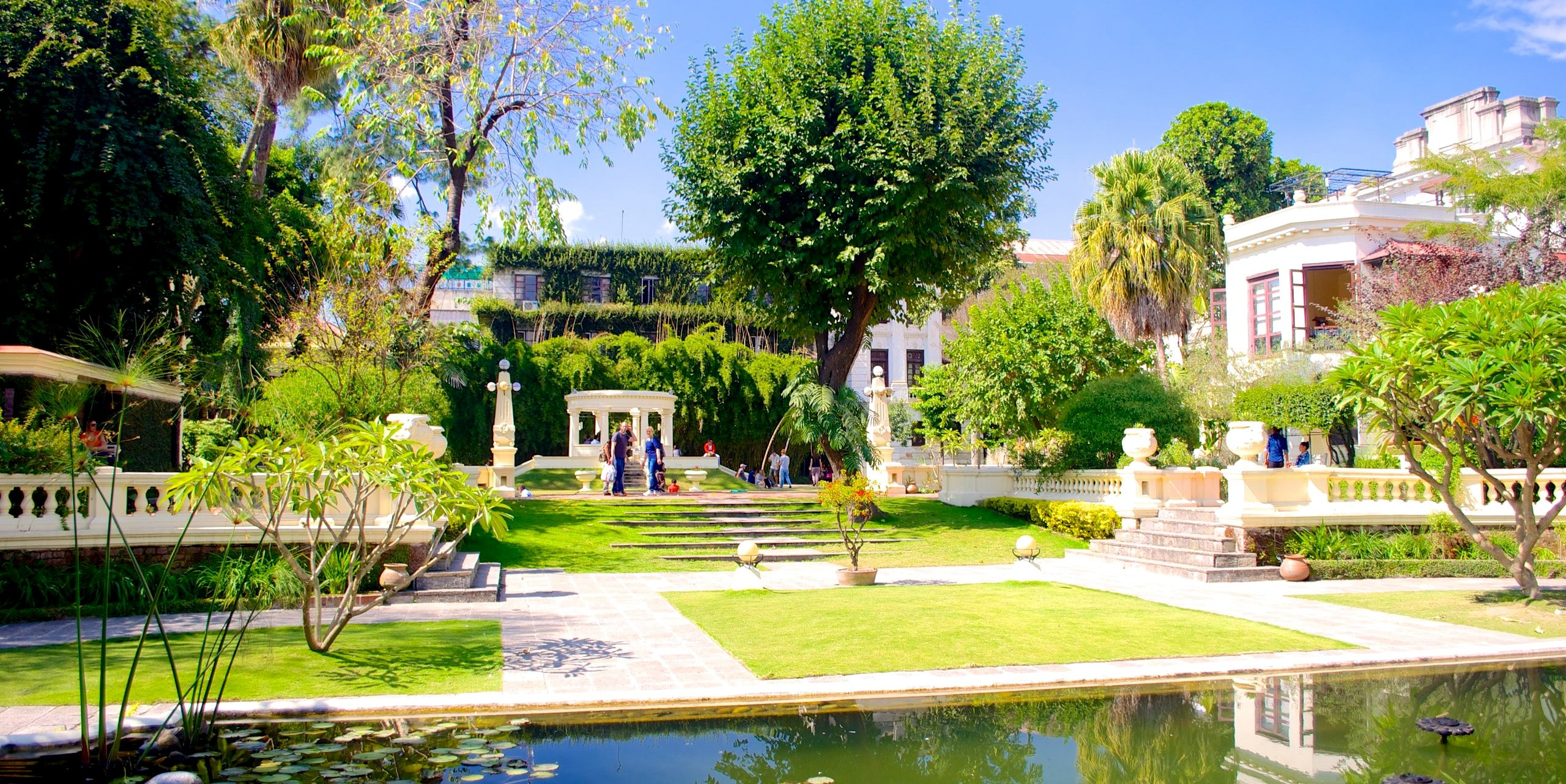
-
Historical Background: Originally built in 1920 by Field Marshal Kaiser Sumsher Rana, the Garden of Dreams was part of a larger estate and modeled after Edwardian estates. After decades of neglect, the garden underwent a comprehensive restoration funded by the Austrian government, and it was reopened to the public in 2007 as an example of historical preservation at its best.
-
Architectural and Horticultural Beauty: The garden spans over 6,895 square meters and is designed in the formal symmetrical style of the Edwardian period. It features sunken flower gardens, pergolas, and a fabulous amphitheater. The pavilions are named after the six Nepalese seasons and provide a variety of visual experiences. The garden's layout is complemented by marble inscriptions and fountains, adding to its European-inspired elegance.
-
A Place of Relaxation: Visitors to the Garden of Dreams can relax on well-manicured lawns or under the shade of grand pavilions. The garden is a popular spot for both locals and tourists seeking a quiet place to read a book, enjoy a leisurely conversation, or simply soak in the peaceful surroundings.
-
Kaiser Café: Nestled within the garden is the Kaiser Café, operated by the Dwarika’s Hotel — renowned for its commitment to heritage preservation. The café offers a range of refreshments, light meals, and desserts, all which can be enjoyed with a view of the lush gardens. It’s a perfect spot for a relaxing brunch or a romantic dinner.
-
Cultural Events and Exhibitions: The Garden of Dreams also serves as a cultural venue, hosting music concerts, cultural programs, and art exhibitions throughout the year. Its central location and beautiful environment make it an ideal place for these events, attracting a crowd that’s both local and international.
-
Photographic Opportunities: With its elaborate and preserved architectural features, the Garden of Dreams is a photographer's delight. The combination of flora, fauna, and classical themes makes it an excellent backdrop for both professional photography and casual snapshots.
Visiting Tips
-
Entry Fee: There is a small entry fee to enter the garden, which is used for its upkeep and maintenance.
-
Best Time to Visit: Early morning and late afternoon are particularly pleasant as the light is great for photography and the temperature is cooler.
-
Relaxation: Bring a book or a journal; it’s the perfect setting for some quiet reading or reflection.
Whether you’re looking to escape the hustle and bustle of the city for a few hours, enjoy a romantic stroll, or simply admire the blend of Eastern and Western architectural styles, the Garden of Dreams offers a unique cultural and relaxing experience in the heart of Kathmandu.
Visit Patan Durbar Square
Patan Durbar Square, located in the heart of Lalitpur city, is a cultural and historical epicenter renowned for its exquisite craftsmanship and stunning display of Newar architecture. As one of the three durbar squares in the Kathmandu Valley, all of which are UNESCO World Heritage Sites, Patan Durbar Square stands out for its artistic heritage and finely detailed architectural elements. Here's why a visit to Patan Durbar Square is essential for anyone exploring the Kathmandu Valley:
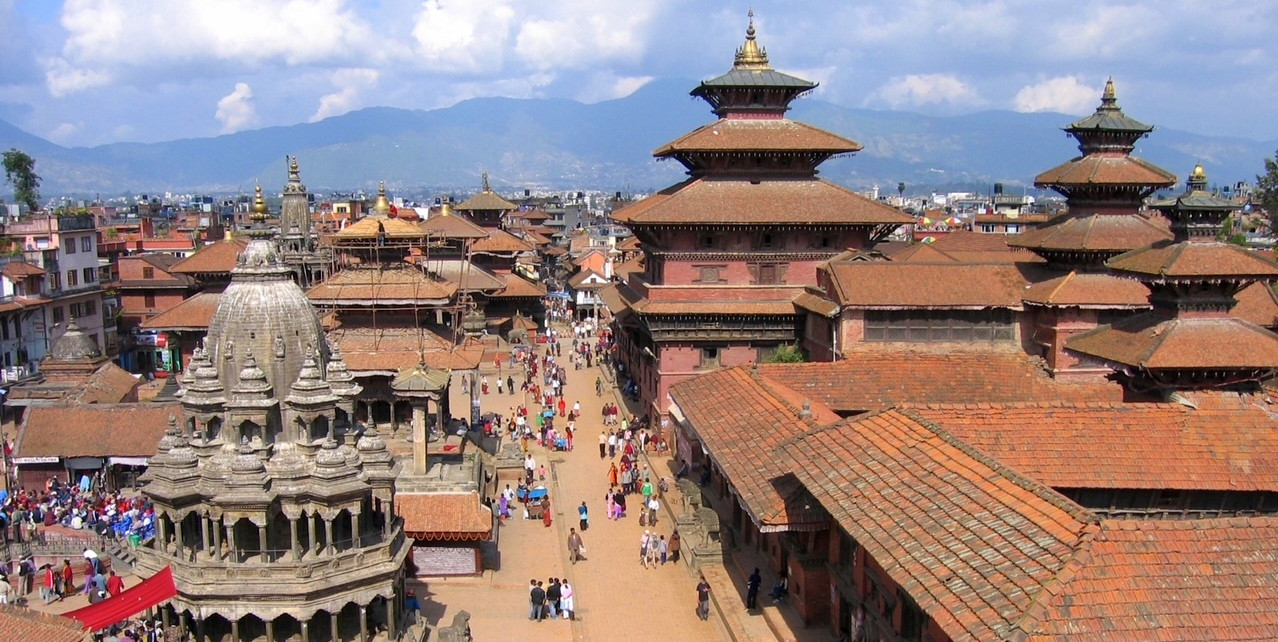
Rich History: Patan, also known as Lalitpur, meaning "City of Beauty," has a rich history that dates back to the 3rd century B.C. The square itself is a former royal palace complex which was the center of Patan’s religious and social life and showcases the city’s historical importance and cultural wealth.
Architectural Marvels
Patan Durbar Square is famed for its intricately carved windows, vibrant courtyards, and impressive pagoda-style temples. Notable structures within the square include:
-
Krishna Mandir: Built in the 17th century from stone rather than the usual brick and wood, this temple is a significant highlight due to its high level of detail and craftsmanship.
-
Patan Museum: Located in the old Malla Royal Palace, this museum displays an extensive collection of Nepalese art, including sculptures, woodcarvings, and metalwork, providing insight into the art history of the Kathmandu Valley.
-
Golden Temple (Hiranya Varna Mahavihar): A few minutes walk from the main square, this Buddhist monastery is adorned with golden façades, and beautiful, intricate statues, making it a stunning photo opportunity.
Cultural Significance: The square is not just a tourist site but also a living museum where daily life and religious activities take place amidst historical buildings. Local residents gather here for social and religious events, adding a dynamic human element to the ancient surroundings.
Art and Craftsmanship: Exploring Patan Durbar Square provides a close look at the skill of Newar craftsmen, whose work has been revered for centuries. From the wooden carvings that line the windows and doors of the ancient palaces to the stone sculptures that decorate the temples, every detail reflects the city’s artistic legacy.
Festivals and Events: Patan Durbar Square is a focal point for many festivals in Lalitpur, most notably the Krishna Janmashtami, celebrating the birth of Lord Krishna, and Buddha Jayanti, the birth of Lord Buddha. These festivals are marked by a great flurry of activity, music, and traditional dance, offering visitors a chance to witness local culture in its most vibrant form.
Visiting Tips
-
Best Time to Visit: Early morning or late afternoon offers softer light for photography and a more relaxed atmosphere to wander around the square.
-
Entry Fee: There is a nominal fee for foreigners, which goes towards the maintenance and restoration of the historic site.
-
Guided Tours: Consider hiring a guide to gain deeper insights into the history and significance of the architecture and the artifacts within the square.
Patan Durbar Square not only offers a window into the architectural grandeur of Nepal’s past but also provides a lively cultural experience that is deeply interwoven with the local community's daily life. It’s a must-visit for anyone wanting to understand the historical and cultural fabric of the Kathmandu Valley.
Take a Spiritual Journey at Kopan Monastery
Located on the outskirts of Kathmandu, nestled atop a hill overlooking the entire Kathmandu Valley, Kopan Monastery offers a tranquil and spiritually enriching retreat. Founded in the 1970s by Lama Thubten Yeshe and Lama Zopa Rinpoche, this Tibetan Buddhist monastery is now a sanctuary of learning, reflection, and meditation. Whether you are a seasoned practitioner or simply curious about Buddhist philosophy, Kopan Monastery provides a welcoming environment to explore spirituality and mindfulness. Here’s what to expect during your visit to Kopan Monastery:
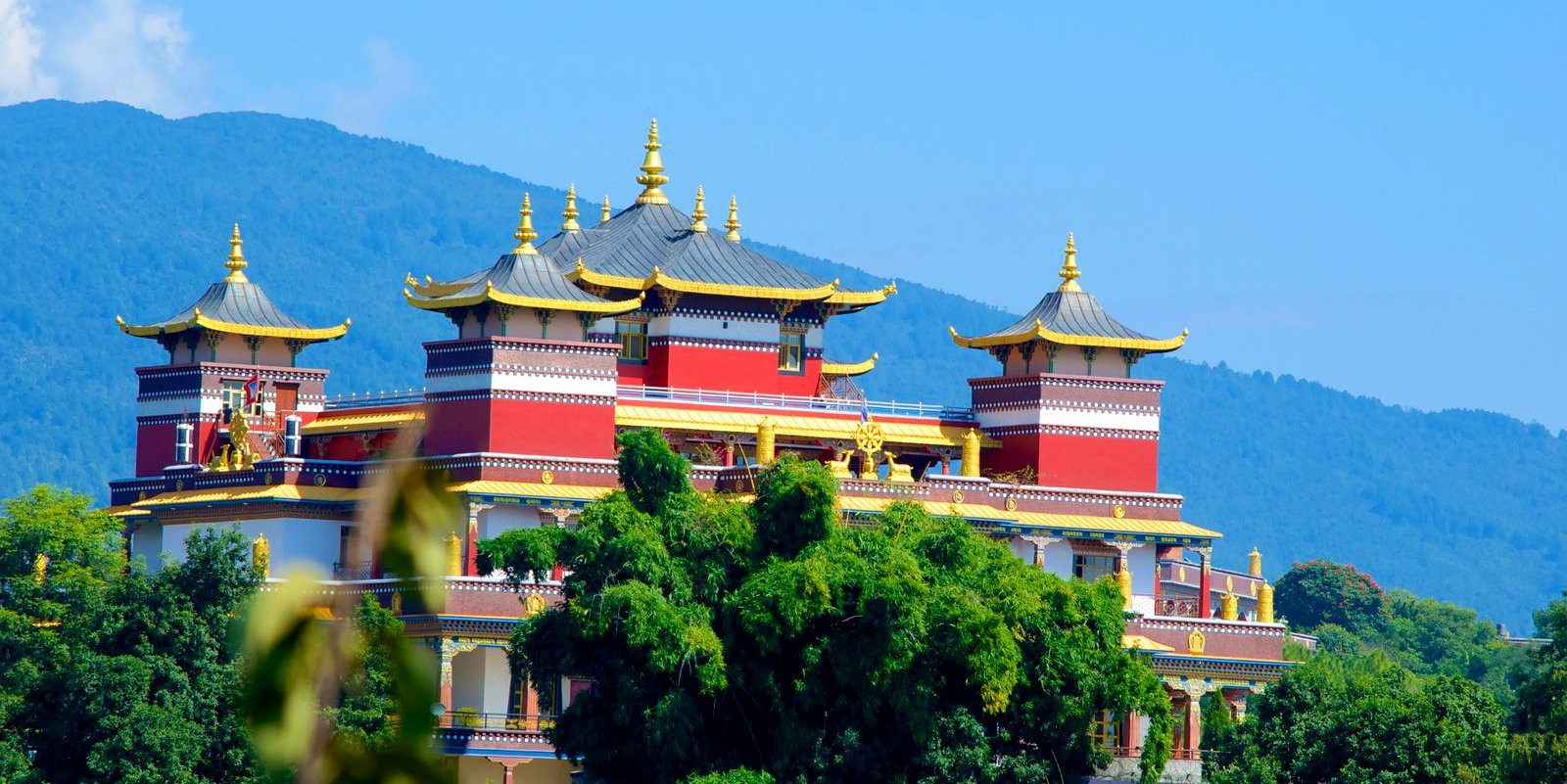
-
Spiritual Learning and Practices: Kopan Monastery serves as a center for Tibetan Buddhist studies, offering a range of courses and retreats that cater to all levels of interest and expertise. These include introductory courses on Buddhism, meditation retreats, and extensive philosophical studies. The teachings are often conducted by learned monks and nuns, making it an authentic environment for spiritual growth.
-
Serene Environment: The monastery is set in a lush environment, with expansive gardens, prayer wheels, and traditional Tibetan architecture. The peaceful surroundings enhance the meditative experience and encourage introspection and relaxation. Visitors can participate in daily practices such as meditation sessions, Dharma talks, and prayer ceremonies, which are integral to the monastery’s routine.
-
Community Interaction: Kopan Monastery is home to a thriving community of monks, nuns, and lay students from around the world. Interacting with this community offers insights into the monastic life and the practices of Mahayana Buddhism. It is an opportunity to learn about the lives of those who have devoted themselves to spiritual pursuits and to understand the principles of communal living.
-
Accommodations and Facilities: For those interested in immersive experiences, Kopan Monastery provides accommodations that range from basic rooms to more comfortable lodgings. The stay includes vegetarian meals prepared within the monastery, promoting a healthy, mindful way of living in line with Buddhist teachings.
-
Participation in Rituals: Visitors have the chance to observe or participate in various Buddhist rituals and ceremonies. These might include puja (worship rituals), Tsog (offering ceremonies), and special prayer sessions that occur on Buddhist holy days and other significant dates on the Tibetan calendar.
Visiting Tips
-
Dress Code: As a sign of respect, visitors are expected to dress modestly, covering shoulders and knees.
-
Silence and Decorum: Given the spiritual and contemplative nature of the monastery, guests are asked to maintain a respectful silence during their visit, especially while classes or meditation sessions are in session.
-
Photography: Be mindful when taking photos, especially during religious ceremonies. It is best to ask for permission before photographing monks, nuns, or ceremonies.
-
Day Visits and Stays: While day visits are welcomed, staying for a retreat or course allows for a deeper engagement with the teachings and community. Advance booking for retreats and accommodations is recommended.
A visit to Kopan Monastery is not just a sightseeing trip but a journey into the heart of Tibetan Buddhism, offering peace, learning, and an opportunity to reset your spiritual compass. Whether you come for a day or stay for a longer retreat, Kopan Monastery provides a meaningful experience that can have lasting impacts on your personal and spiritual life.
Enjoy Local Cuisine
Kathmandu, a melting pot of cultures and traditions, offers a vibrant culinary scene that reflects the diversity of Nepal's ethnic communities. From hearty meals to light snacks, the city's food landscape invites visitors to indulge in a wide range of flavors and dishes. Here’s a guide to enjoying local cuisine in Kathmandu, ensuring you don’t miss out on the culinary delights this city has to offer:
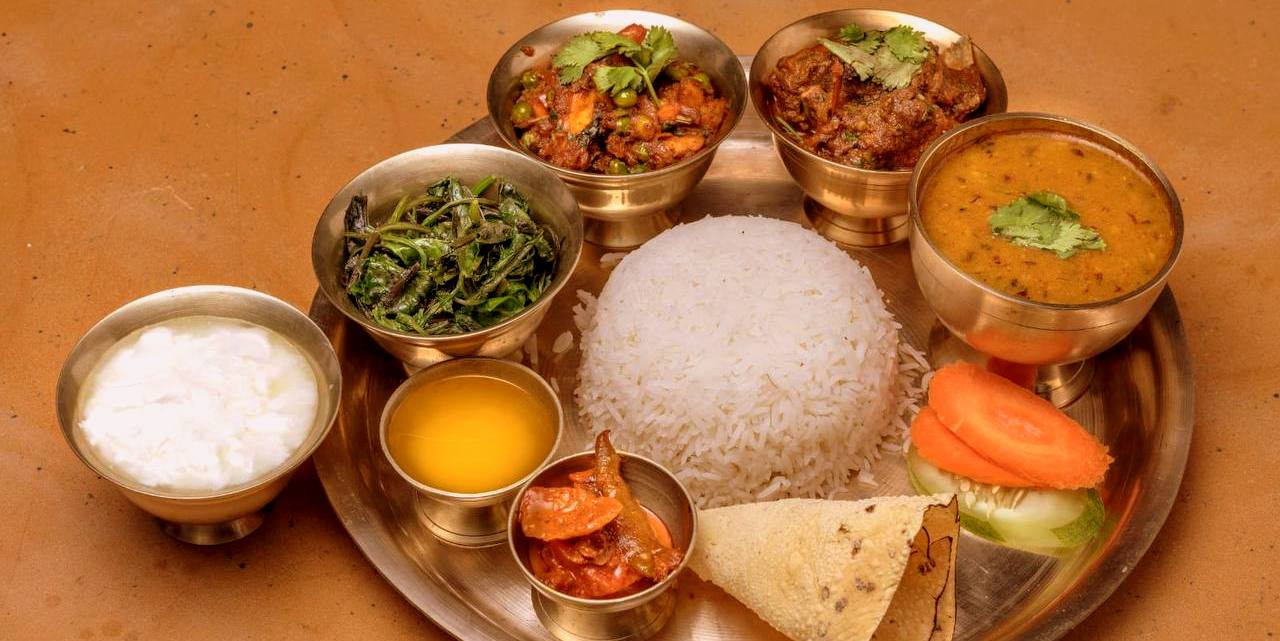
Traditional Nepali Dishes
-
Dal Bhat: The staple meal of Nepal, consisting of lentil soup (dal), boiled rice (bhat), and usually accompanied by vegetable curries, pickled dishes (achar), and sometimes meat. It’s nutritious, filling, and served in almost every local eatery.
-
Momos: Tibetan-style dumplings that have become a beloved snack in Nepal. They are filled with either meat or vegetables and can be steamed, fried, or served in a soup. Don’t miss trying the spicy tomato-based dipping sauce that accompanies them.
-
Thukpa: A hearty noodle soup, influenced by Tibetan cuisine, perfect for the colder days. It typically includes meat or vegetables in a flavorful broth.
Newari Cuisine
As the indigenous people of the Kathmandu Valley, the Newars have a rich culinary tradition:
-
Chatamari: Sometimes referred to as 'Newari pizza,' this is a rice crepe topped with ingredients like minced meat, egg, and onions.
-
Bara (Wo): A savory, spongy pancake made from lentil paste, which can be eaten alone or topped with egg or minced meat.
-
Yomari: A sweet treat made from rice dough and filled with a mixture of coconut, sesame seeds, and molasses.
Street Food
Kathmandu’s streets are alive with vendors offering a variety of quick and tasty eats:
-
Pani Puri: Small, round hollow puri (fried crisp crepes) filled with a mixture of flavored water, tamarind chutney, chili, chaat masala, potato, onion, and chickpeas.
-
Sekuwa: Barbecued meat marinated in local spices, served with beaten rice and pickled vegetables.
Beverages
-
Chiya: Nepali tea made with spices and milk, similar to Indian chai. It’s a staple in local households.
-
Raksi: A traditional alcoholic beverage made from distilled millet or rice, often enjoyed during festivals and celebrations.
Desserts
-
Juju Dhau: Known as the ‘king of yogurts,’ this creamy, sweet yogurt originates from Bhaktapur and is famous for its rich taste and thick consistency.
-
Lal Mohan: A sweet, spongy ball made of milk powder, deep-fried and soaked in sugary syrup.
Dining Etiquette
-
Eating with Hands: It's common to eat with your right hand in Nepal, especially when enjoying meals like dal bhat.
-
Respectful Dining: Always ask before taking photos in local eateries, especially if people are eating.
Where to Eat
-
Local Eateries and Bhojanalayas: These are great for experiencing authentic local dining at reasonable prices.
-
Thamel and Patan: For those looking to try a wide range of Nepali dishes in more tourist-friendly settings, these areas offer a plethora of restaurants catering to both local and international tastes.
Exploring Kathmandu through its food not only satisfies the palate but also offers insights into the Nepalese way of life, making dining an integral part of the travel experience. Whether you're savoring a plate of momos from a street vendor or sitting down for a traditional Newari feast, Kathmandu's culinary delights are sure to leave a lasting impression.
Engage in Adventure Activities
Kathmandu, nestled in the foothills of the Himalayas, serves as the gateway to some of the world’s most thrilling adventure activities. Whether you’re an adrenaline junkie or a nature lover seeking to explore the great outdoors, Kathmandu offers a diverse range of activities that cater to all levels of adventure enthusiasts. Here’s a guide to engaging in adventure activities during your stay in Kathmandu:
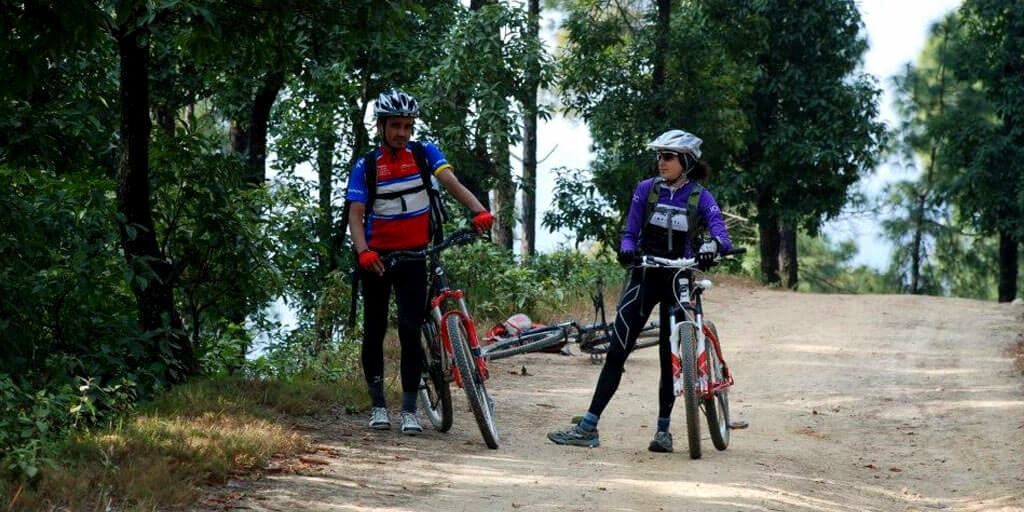
Trekking and Hiking
Kathmandu is the starting point for several iconic treks that vary in difficulty, scenery, and duration.
-
Everest Base Camp Trek: For the ultimate trekking challenge, this trek offers breathtaking views of the world’s highest peak.
-
Langtang Valley Trek: A somewhat easier option, this trek provides a mix of mountain scenery and local culture without the need for long travel.
-
Nagarkot Hike: Ideal for those who are short on time, this hike offers stunning Himalayan panoramas and can be completed in a day.
Mountain Biking
Explore the rugged landscapes and rural villages around the Kathmandu Valley on a mountain bike. The terrain offers everything from easy dirt roads to challenging single tracks.
-
Shivapuri National Park: Offers excellent trails through forests and along ridges with spectacular views of the valley.
-
Dhulikhel to Panauti: A more leisurely ride through traditional villages and along scenic paths.
Paragliding
Bungee Jumping
For the ultimate thrill, take a leap from one of the world’s highest bungee jumps.
- The Last Resort: Located near the Tibetan border, about a three-hour drive from Kathmandu, it offers a spectacular 160-meter jump over the Bhote Koshi River.
Rock Climbing
Kathmandu and its surroundings offer several rock climbing sites suitable for beginners and experienced climbers alike.
-
Nagarjun Forest Reserve: Features a number of routes and is just a short drive from central Kathmandu.
-
Pharping: Located on the way to Dakshinkali, offering climbing routes set against a backdrop of rural landscapes.
Rafting and Kayaking
The rivers flowing from the Himalayas offer incredible opportunities for water sports, with rapids ranging from Grade III to V.
-
Trishuli River: Popular for day trips and suitable for first-time rafters.
-
Bhote Koshi River: Offers some of the most challenging rapids in Nepal, suitable for experienced rafters.
Adventure Sports Centers
For those looking to try multiple activities in one location:
- Kathmandu Adventure Park: Offers ziplining, obstacle courses, and paintball, among other activities.
Tips for Adventure Seekers
-
Safety First: Always choose reputable companies for adventure activities that prioritize safety and provide experienced guides.
-
Weather Considerations: Be mindful of the weather conditions, which can change rapidly in the mountains.
-
Local Regulations: Some activities may require permits or have restrictions, so check with your tour provider about any necessary paperwork.
Engaging in these adventure activities allows you to experience the natural beauty and thrilling landscapes of Nepal from unique perspectives. Whether soaring through the sky, scaling rocky cliffs, or paddling through raging rivers, Kathmandu provides an adventure playground like no other.
Tips for Top 10 Best Things to do in Kathmandu
Exploring Kathmandu offers a rich tapestry of culture, history, and adventure, each with its own unique charm. Here’s a combined list of tips to help you make the most out of the top 10 activities in Kathmandu:
-
Timing and Local Insights: For sites like Kathmandu Durbar Square and Swayambhunath Stupa, visit early in the morning or late afternoon to avoid the crowds and capture the essence of local life. Hiring a local guide can provide deeper insights into the historical and cultural significance of these places.
-
Cultural Sensitivity and Respect: When visiting sacred sites such as Pashupatinath Temple or Boudhanath Stupa, dress conservatively and respect local customs, like walking clockwise around the stupas. Be particularly mindful at Pashupatinath to ask permission before taking photos, especially during cremation ceremonies.
-
Exploration and Bargaining: In Thamel, don’t hesitate to venture into smaller streets for unique finds and bargain with shopkeepers, as negotiating is part of the shopping experience.
-
Relaxation and Planning: Take time to unwind in the serene environment of the Garden of Dreams with a book or simply enjoy the peaceful atmosphere. Plan visits to places like Kopan Monastery in advance, especially if you want to participate in a meditation retreat.
-
Local Cuisine and Safety: Embrace local flavors with street food like momos or dal bhat but choose places that are popular with locals to ensure food freshness and hygiene. Trying traditional beverages like Chiya or Raksi can also enhance your culinary experience.
-
Adventure and Safety Precautions: Engage in adventure activities through reputable companies to ensure safety, especially for thrilling experiences like bungee jumping or paragliding. Always check the weather forecast before embarking on treks or outdoor activities.
-
Cultural Immersion and Artisan Interaction: Patan Durbar Square is not only about sightseeing but also engaging with the local culture. Don’t miss the Patan Museum and take time to explore local artisan shops for authentic crafts.
By following these combined tips, you can ensure a fulfilling journey through Kathmandu, enriching your travel experience while respecting and participating in local traditions and activities.
Ideal Time for Top 10 Best Things to do in Kathmandu
Planning your visit to Kathmandu can depend significantly on the seasonal variations the city experiences. Here’s how each season shapes the possibilities and experiences in Kathmandu:
Spring (March to May)
-
Weather: Mild to warm temperatures, making it comfortable for exploring and trekking.
-
Highlights: The landscape is in full bloom, especially with rhododendrons and other wildflowers, making this a picturesque time to visit.
-
Activities: Ideal for trekking, as the trails are less muddy than during the monsoon. This is a great time for cultural festivals like Holi and Buddha Jayanti, offering a vibrant glimpse into local traditions.
Summer/Monsoon (June to August)
-
Weather: The monsoon season brings heavy rains, which can result in slippery roads and obscured mountain views but also leads to lush, green landscapes.
-
Highlights: Fewer tourists mean more peaceful visits to popular sites and lower prices in terms of accommodations and other services.
-
Activities: Good for those interested in the agricultural lifestyle of Nepal as the paddy fields are lush and the farmers are active. Indoor activities like museum visits, cooking classes, and exploring temples can also be enjoyable, as they offer respite from the rain.
Autumn (September to November)
-
Weather: Clear skies and mild temperatures create ideal conditions for sightseeing and outdoor activities.
-
Highlights: This is the peak tourist season due to the excellent weather and clear mountain views. Major festivals like Dashain and Tihar fall in these months, offering deep cultural immersion.
-
Activities: Perfect for trekking, city tours, and any outdoor activities. All trekking routes are open, and the views are generally at their best, making it the optimal time for photography and nature hikes.
Winter (December to February)
-
Weather: Cold, especially during the mornings and nights, but generally sunny during the day. Snowfall is rare in Kathmandu itself but can be found in higher altitudes.
-
Highlights: The colder months see fewer tourists, which means more tranquil visits to popular spots and more interaction with locals.
-
Activities: Ideal for those who enjoy the crisp winter air and smaller crowds. While higher altitude treks might be challenging, lower altitude walks are pleasant. Cultural visits and exploring the city's historical sites are also comfortable during the day.
Each season in Kathmandu offers a unique array of experiences, whether you’re looking to engage in outdoor adventures, immerse in local culture, or simply enjoy the natural and urban sights in more temperate weather. Choose the season that best aligns with your interests and what you hope to get out of your trip.
Kathmandu offers a unique blend of history, spirituality, and adventure, making it a captivating destination for all types of travelers. From the ancient stupas of Swayambhunath and Boudhanath to the lively markets of Thamel and the serene Garden of Dreams, the city is a tapestry of cultural and natural wonders. Whether you’re exploring sacred temples, indulging in local cuisine, or embarking on outdoor adventures, Kathmandu is a city that promises rich experiences and lasting memories. Dive into its vibrant life, connect with its warm people, and carry away insights and stories that resonate beyond your journey.
FAQs for Top 10 Best Things to do in Kathmandu
Q: What is the best time of year to visit Kathmandu?
A: The optimal times to visit Kathmandu are during the autumn months of October and November when the weather is clear and mild, and during spring, from March to April, ideal for seeing the valley in full bloom.
Q: Is it safe to walk around Kathmandu?
A: Kathmandu is generally safe for tourists. However, as in any major city, it's advisable to stay aware of your surroundings, secure your valuables, and be cautious with money and personal items, especially in crowded areas.
Q: How should I dress when visiting temples in Kathmandu?
A: Dress conservatively by covering your shoulders and knees and removing your shoes before entering temple premises. Hats should also be avoided inside temples.
Q: Can I take photographs inside the temples?
A: Photography policies vary by temple. Some may allow it, while others restrict it, especially inside main worship areas. Look for signage or ask a temple official before taking photos.
Q: What are some must-try local foods in Kathmandu?
A: Essential local dishes include momos (dumplings), dal bhat (rice and lentils), and Newari cuisine such as chatamari and bara. Also, sampling the local tea, chiya, is highly recommended.
Q: Are there any entry fees for the tourist sites in Kathmandu?
A: Yes, most major tourist sites like Kathmandu Durbar Square, Patan Durbar Square, and Boudhanath Stupa charge a small entry fee used for maintenance and preservation.
Q: What are some tips for shopping in Kathmandu?
A: Bargaining is common in Thamel and local markets. Start negotiating at about half the initial price, and compare prices in different shops before making a purchase.
Q: How can I get around Kathmandu?
A: Common transportation options include taxis, rickshaws, and local buses. Negotiate taxi fares before starting your trip, and consider rickshaws for shorter distances.
Q: What should I know about altitude sickness in Kathmandu?
A: Kathmandu's elevation is not typically high enough to cause altitude sickness. However, if trekking to higher altitudes like Nagarkot or the Himalayas, be aware of altitude sickness symptoms and take precautions such as proper acclimatization and hydration.
Q: How can I respect local customs and traditions while visiting?
A: Respect local customs by using the greeting "Namaste," wearing appropriate clothing, especially in religious settings, and seeking permission before photographing people or their properties.
For the Nepal tour, please click here.
If you are looking for different kinds of Nepal Tours or Trekking Packages, feel free to contact us.
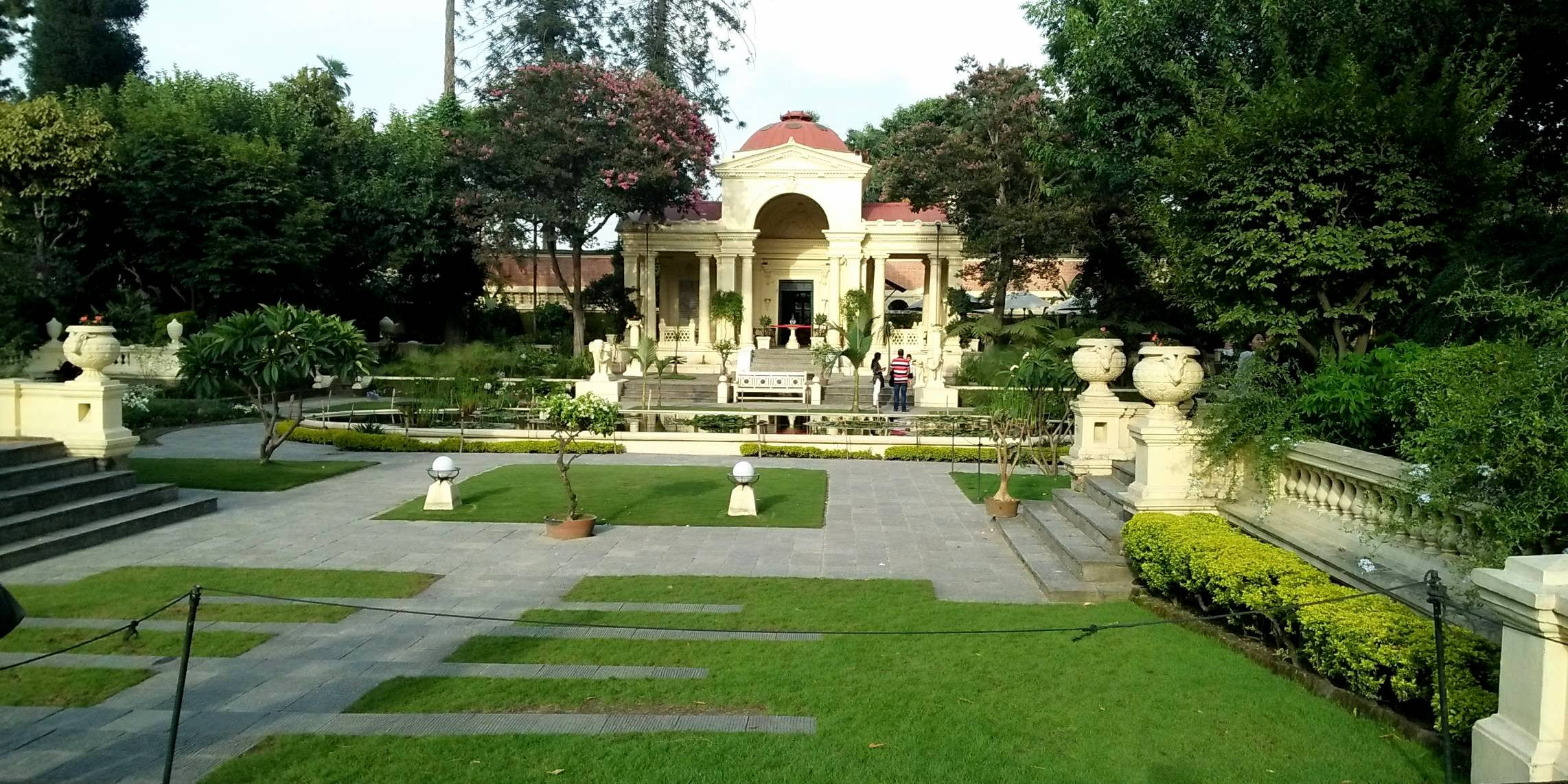


.jpg)








